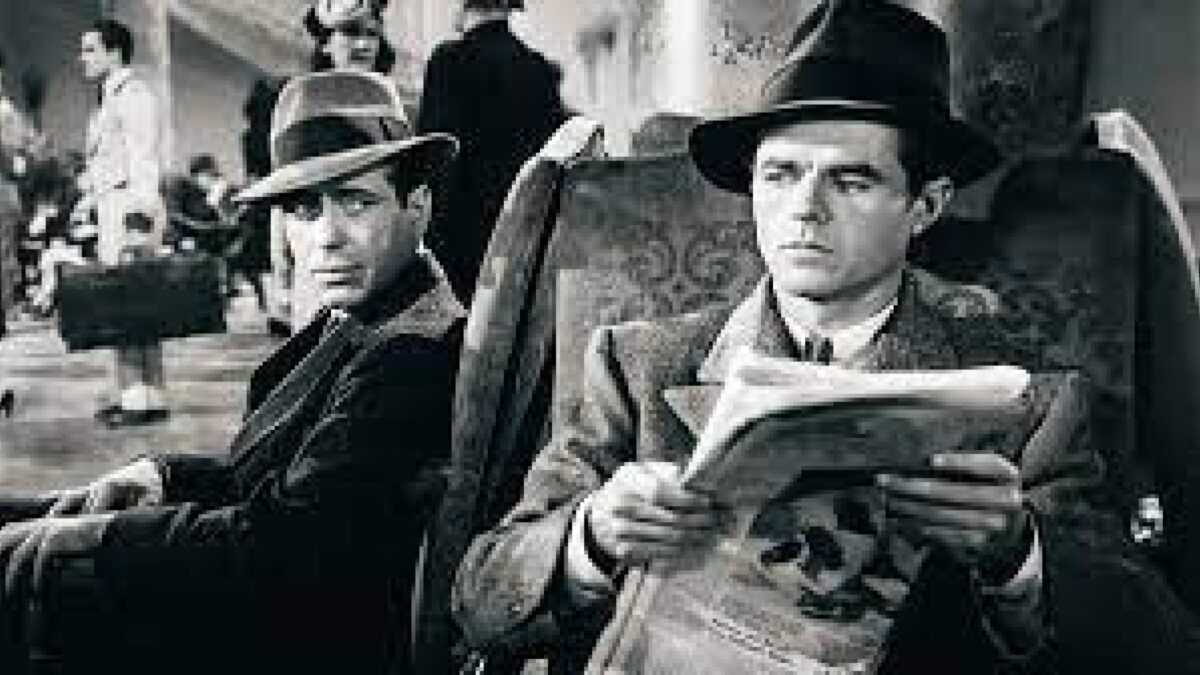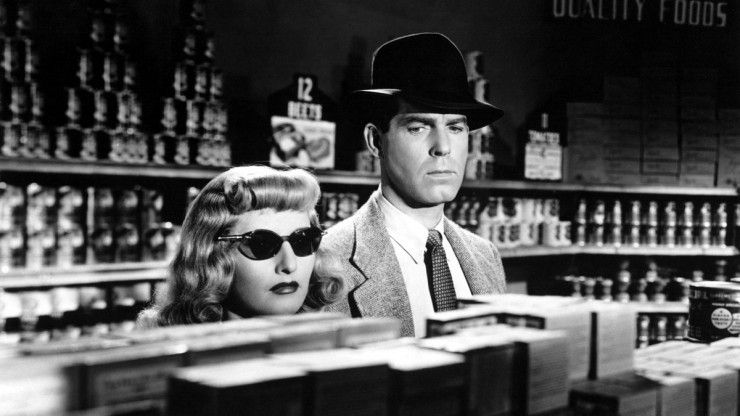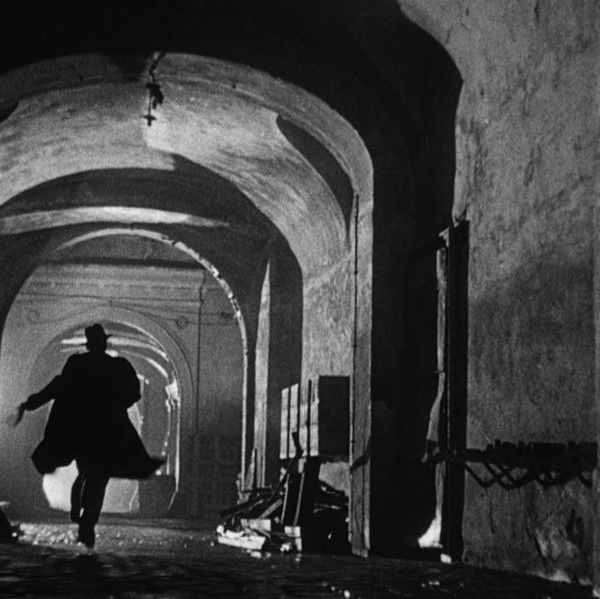
Get ready to peer through the Venetian blinds.
As a film enthusiast, I have always been intrigued by the genre of film noir. Its dark and mysterious themes, coupled with its distinctive visual style, have made it one of the most iconic genres in the history of cinema.
In this comprehensive guide, I will dive deeper into the world of film noir by exploring its origins, key characteristics, the use of lights and shadows, the role of women, its impact on cinema, and its influence on modern media.
Let’s get started.
Table of Contents
Film Noir Definition
Film noir is a term used to describe a genre of films that emerged in the United States in the 1940s and 1950s. The term “film noir” is a French term meaning “black film” or “dark film,” which refers to the dark and moody themes and visual style of these films.
Film noir films often feature morally ambiguous characters, cynical and disillusioned attitudes, and a sense of pessimism and fatalism. The plots of film noir films often revolve around crime, particularly murder, and the characters are often involved in shady and illegal activities.
The visual style of film noir is characterized by low-key lighting, shadowy and high-contrast cinematography, and the use of dramatic camera angles and framing. The atmosphere of film noir is often one of tension, suspense, and unease, with a focus on the darker side of human nature.
Introduction to Film Noir
Film noir is a genre of cinema that emerged in the 1940s and 1950s, characterized by its dark and cynical themes, shadowy visuals, and morally ambiguous characters. These films were often low-budget productions that focused on the seedy underbelly of American society, featuring hard-boiled detectives, femme fatales, and dangerous criminals.
The Origins of Film Noir
The origins of film noir can be traced back to the German Expressionist cinema of the 1920s and 1930s. German Expressionist films were known for their use of chiaroscuro lighting, exaggerated sets, and twisted, psychological narratives. When many German filmmakers fled to Hollywood after the rise of the Nazi regime, they brought with them the visual techniques and thematic concerns of Expressionism, which would later influence the development of film noir.
Another important influence on film noir was the hard-boiled crime fiction of writers like Raymond Chandler and Dashiell Hammett. These writers created a new kind of detective story, one that was more realistic and gritty than the detective stories of the past. Their characters were flawed and complex, and their stories often explored the dark side of American society.
Key Characteristics of Film Noir
There are several key characteristics that define the film noir genre.
First, film noir is characterized by its use of chiaroscuro lighting, which creates deep shadows and high contrast between light and dark. This lighting technique is often used to create a sense of mystery and tension in the film.
Secondly, film noir is known for its morally ambiguous characters. The protagonist is often a flawed and cynical detective, caught up in a world of crime and corruption. The femme fatale is another key character in film noir, a seductive and dangerous woman who often leads the protagonist down a path of self-destruction.
Finally, film noir is characterized by its dark and cynical themes. The films often explore the seedy underbelly of American society, featuring themes of crime, corruption, and betrayal. The endings of many film noir movies are often bleak and pessimistic, with the protagonist often meeting a tragic fate.

The Impact of Film Noir on Cinema
Film noir had a significant impact on the development of cinema, influencing filmmakers around the world. Its distinctive visual style and dark themes would go on to inspire many other genres of cinema, including neo-noir, crime thrillers, and psychological dramas.
Film noir also had a significant impact on the way that Hollywood produced and marketed films. Many of the films in the genre were low-budget productions, which allowed filmmakers to experiment with new techniques and ideas. The success of these films would later lead to the development of the independent film industry.
The Best Film Noir Movies of All Time
Now that you know what defines a film noir, let’s take a look at some of the best examples of the genre. Here is a our watchlist of the best films that define the film noir genre:
-
Double Indemnity (1944): directed by Billy Wilder and starring Fred MacMurray and Barbara Stanwyck.
-
The Maltese Falcon (1941): directed by John Huston and starring Humphrey Bogart and Mary Astor.
-
The Third Man (1949): directed by Carol Reed and starring Orson Welles and Joseph Cotten.
-
Out of the Past (1947): directed by Jacques Tourneur and starring Robert Mitchum and Jane Greer.
-
Sunset Boulevard (1950): directed by Billy Wilder and starring William Holden and Gloria Swanson.
-
Touch of Evil (1958): directed by Orson Welles and starring Charlton Heston and Janet Leigh.
-
The Big Sleep (1946): directed by Howard Hawks and starring Humphrey Bogart and Lauren Bacall.
-
Detour (1945): directed by Edgar G. Ulmer and starring Tom Neal and Ann Savage.
-
The Asphalt Jungle (1950): directed by John Huston and starring Sterling Hayden and Louis Calhern.
-
Kiss Me Deadly (1955): directed by Robert Aldrich and starring Ralph Meeker and Maxine Cooper.

Famous Film Noir Directors and Actors
There have been many talented directors and actors who have worked in the film noir genre over the years. Some of the most famous film noir directors include:
-
Billy Wilder: Known for his films Double Indemnity and Sunset Boulevard, Wilder was one of the most successful directors of the film noir era.
-
Alfred Hitchcock: Although not known for making traditional film noir movies, Hitchcock’s films often featured many of the same themes and visual techniques.
-
Orson Welles: Welles directed Touch of Evil, one of the most iconic film noir movies of all time.
Some of the most famous film noir actors include:
-
Humphrey Bogart: Known for his roles in The Maltese Falcon and The Big Sleep, Bogart was one of the most iconic actors of the film noir era.
-
Barbara Stanwyck: Stanwyck starred in many classic film noir movies, including Double Indemnity and The Strange Love of Martha Ivers.
-
Edward G. Robinson: Robinson was known for playing tough-talking detectives and gangsters in many of his film noir roles.
The Use of Lighting and Shadow in Film Noir
One of the most distinctive visual elements of film noir is its use of lighting and shadow. The chiaroscuro lighting technique used in film noir creates a sense of mystery and tension, as the characters are often shrouded in darkness and only partially visible.
Lighting is often used to highlight certain aspects of the scene, such as a character’s face or a particular object. Shadows are also used to create a sense of danger and uncertainty, as the characters are often seen lurking in the darkness.

The Role of Women in Film Noir
Women play a significant role in the film noir genre, often portrayed as seductive and dangerous femme fatales. These characters use their sexuality to manipulate and control the male protagonist, leading them down a path of self-destruction.
However, there are also many strong and complex female characters in film noir, such as the character of Phyllis Dietrichson (Barbara Stanwyck) in Double Indemnity. These characters often subvert traditional gender roles and challenge the expectations of the male-dominated society in which they live.
Film noir continues to influence modern media, with many filmmakers and television producers drawing inspiration from the genre. The use of chiaroscuro lighting and morally ambiguous characters can be seen in many modern crime dramas and thrillers.
The popularity of film noir has also led to a resurgence of interest in the genre, with many classic film noir movies being re-released and restored for modern audiences.

Summing Up The Mysterious World of Film Noir
Film noir is a genre of cinema that has had a significant impact on the development of cinema. Its distinctive visual style, dark themes, and morally ambiguous characters have made it one of the most iconic genres in the history of cinema. Although the era of classic film noir may be over, its influence continues to be felt in modern media, and its legacy will undoubtedly continue to inspire filmmakers for generations to come.
Let me know what you think in the comments.














